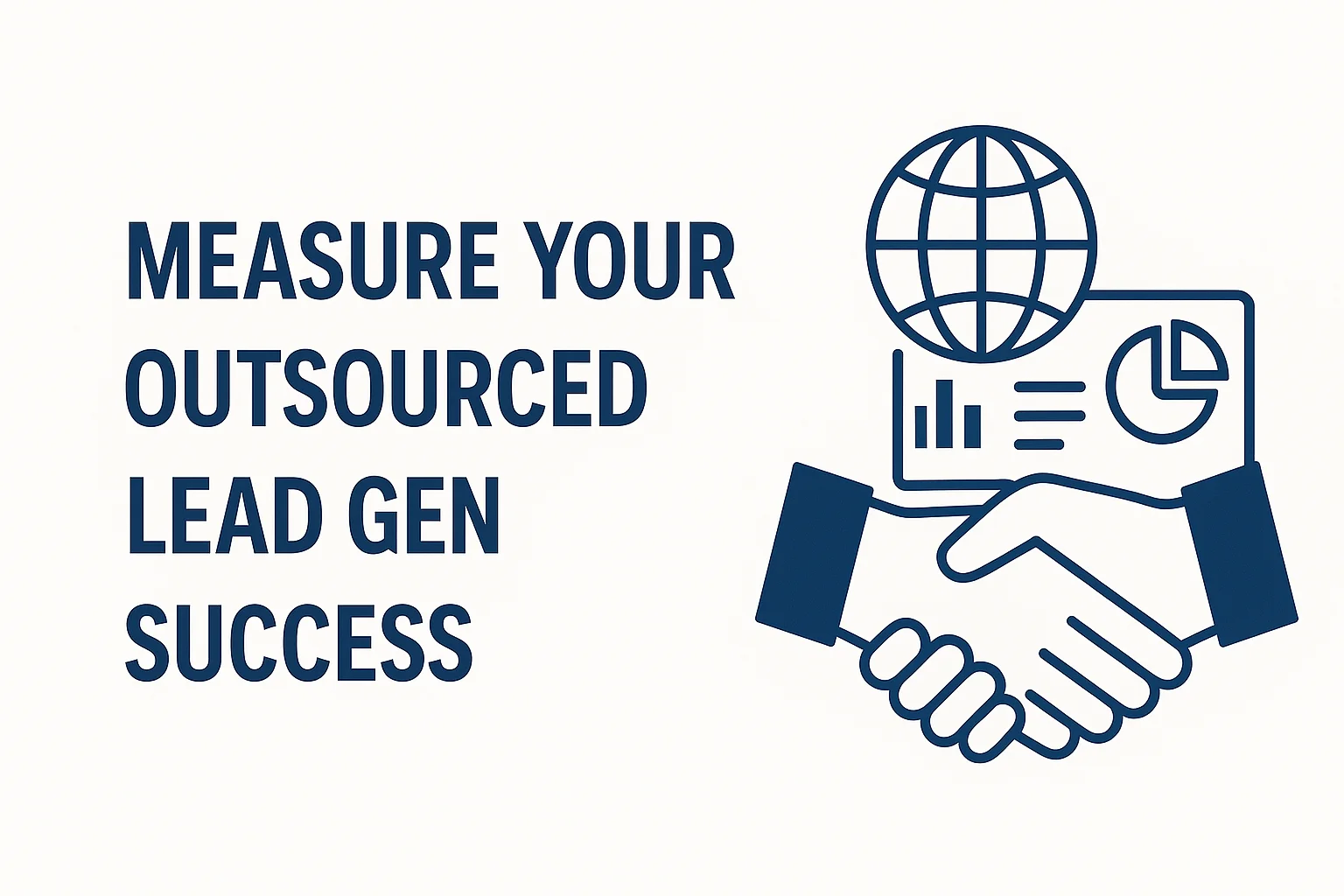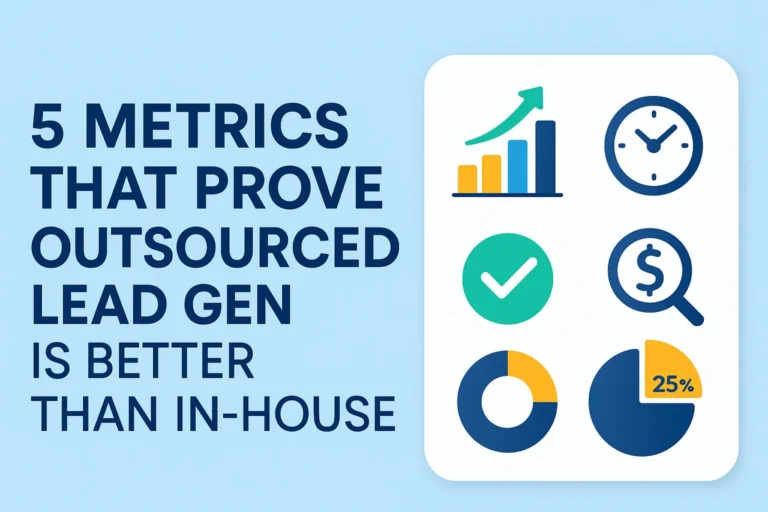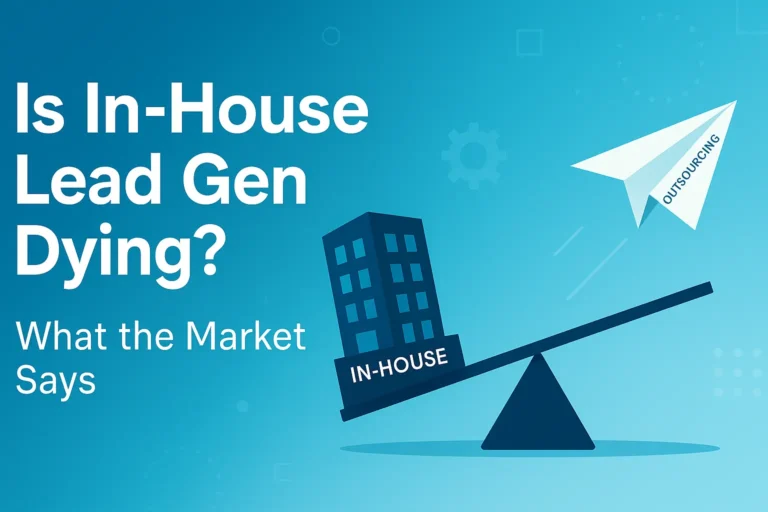How to Measure Success in Outsourced B2B Lead Generation
Handing top-of-funnel work to a partner can feel like a leap of faith: meetings get booked, calendars fill up—but are you actually getting closer to revenue?
The only way to know is to track a small, disciplined set of numbers that reveal quantity, quality, speed, and cost. Below is a straightforward framework you can lift into your own dashboard today.
1 Why measurement matters more than volume
A flood of meetings looks great in a weekly report, yet one low-intent call can burn an Account Executive’s hour—and your credibility. By watching a balanced scorecard you spot waste early and double-down on what works.
2 Four metric families to track
| Metric family | Core KPI | Winning range | What it tells you |
|---|---|---|---|
| Quantity | Meetings per SDR per month | 12–15 for mid-market SaaS martal.ca | Is the engine producing enough at-bats? |
| Quality | Show-rate | ≥ 70 % (6.5 % no-shows is the median) revenuehero.io | Are prospects serious enough to turn up? |
| Speed | Days to first attended meeting | ≤ 15 | How quickly the program spins up and iterates |
| Cost | Cost per appointment | $50–$300, depending on complexity belkins.io | Your apples-to-apples spend versus other routes |
Tip: Track SQL-to-Opportunity rate (20–30 %) alongside show-rate to be sure booked calls convert.
3 Building a simple scorecard
Create one sheet—Excel, Google, Airtable, doesn’t matter—with columns for:
- Date booked
- SDR owner
- Channel that landed the call (email / LinkedIn / phone)
- ICP match? (yes / no)
- Decision-maker present? (yes / no)
- Resulting pipeline $ value
That last column ties activity back to revenue and keeps everyone honest.
4 Reading the signals
| Symptom | Likely cause | First quick fix |
|---|---|---|
| Many meetings, low pipeline | ICP too loose | Tighten firmographic filters; add seniority requirement |
| High no-show rate | Weak reminders | Add SMS plus a one-click calendar resend 24 h before |
| Rising cost per meeting | List fatigue | Swap in a fresh vertical; enrich data before outreach |
5 Case in point
A U.S. SaaS vendor moved outbound to an India-based SDR pod. Within 90 days they cut CAC by 45 % while doubling pipe coverage. The turning point was a contract clause that docked fees when show-rate slipped below 70 %. Why it worked: the vendor measured quality, not just counts.
6 Reporting rhythm that keeps everyone aligned
| Cadence | Agenda |
|---|---|
| Daily 10-min huddle | Yesterday’s shows / no-shows, urgent fixes |
| Weekly 30-min review | KPI trend line, review of two call recordings |
| Monthly QBR | Pipeline $, CAC, next-month experiments |
Short, regular touchpoints surface problems while they’re cheap to solve.
7 Putting it to work this week
- Paste the metric table above into your existing report.
- Fill the past 30 days of data—no judgment, just a baseline.
- Pick one red metric and assign an owner to improve it by 10 % this month.
- Bookmark this post and revisit in a quarter to see how far you’ve come.
Key take-away
Outsourced lead generation isn’t a gamble when you measure quantity, quality, speed, and cost with the same rigor you’d use in-house. Start small, track honestly, and you’ll know—long before quarter-end—whether the program earns its keep.







